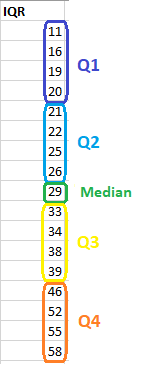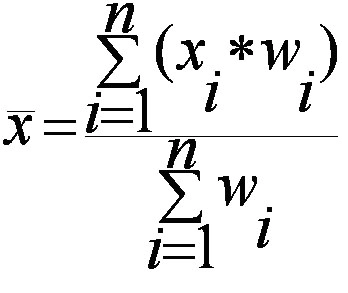Sampling Techniques (Probability and Non-Probability Sampling Techniques)
Sampling Techniques refer to the methods used to select individuals, items, or data points from a larger population for research purposes. These techniques ensure that the sample accurately represents the entire population, allowing for valid and reliable conclusions. Sampling techniques are broadly classified into two categories: probability sampling (where every element has an equal chance of being selected) and non-probability sampling (where selection is based on researcher judgment or convenience). Common methods include random sampling, stratified sampling, cluster sampling, convenience sampling, and purposive sampling. Choosing the right sampling technique is crucial because it impacts the quality, accuracy, and generalizability of the research findings. Proper sampling reduces bias and increases research credibility.
Probability Sampling Techniques
Probability sampling techniques are methods where every member of the population has a known and equal chance of being selected for the sample. These techniques aim to eliminate selection bias and ensure that the sample is truly representative of the entire population. Common types of probability sampling include simple random sampling, systematic sampling, stratified sampling, and cluster sampling. Researchers often prefer probability sampling because it allows the use of statistical methods to estimate population parameters and test hypotheses accurately. This approach enhances the validity, reliability, and generalizability of research findings, making it fundamental in scientific studies and decision-making processes.
Types of Probability Sampling Techniques:
-
Simple Random Sampling
Every population member has an equal, independent chance of selection, typically using random number generators or lotteries. This method eliminates selection bias and ensures representativeness, making it ideal for homogeneous populations. However, it requires a complete sampling frame and may miss small subgroups. Despite its simplicity, large sample sizes are often needed for precision. It’s widely used in surveys and experimental research where unbiased representation is critical.
-
Stratified Random Sampling
The population is divided into homogeneous subgroups (strata), and random samples are drawn from each. This ensures representation of key characteristics (e.g., age, gender). It improves precision compared to simple random sampling, especially for heterogeneous populations. Proportionate stratification maintains population ratios, while disproportionate stratification may oversample rare groups. This method is costlier but valuable when subgroup comparisons are needed, such as in clinical or sociological studies.
-
Systematic Sampling
A fixed interval (*k*) is used to select samples from an ordered population list (e.g., every 10th person). The starting point is randomly chosen. This method is simpler than random sampling and ensures even coverage. However, if the list has hidden patterns, bias may occur. It’s efficient for large populations, like quality control in manufacturing or voter surveys, but requires caution to avoid periodicity-related distortions.
-
Cluster Sampling
The population is divided into clusters (e.g., schools, neighborhoods), and entire clusters are randomly selected for study. This reduces logistical costs, especially for geographically dispersed groups. However, clusters may lack internal diversity, increasing sampling error. Two-stage cluster sampling (randomly selecting subjects within chosen clusters) improves accuracy. It’s practical for national health surveys or educational research where individual access is challenging.
-
Multistage Sampling
A hybrid approach combining multiple probability methods (e.g., clustering followed by stratification). Large clusters are selected first, then subdivided for further random sampling. This balances cost and precision, making it useful for large-scale studies like census data collection or market research. While flexible, it requires careful design to minimize cumulative errors and maintain representativeness across stages.
Non-Probability Sampling Techniques:
Non-probability Sampling refers to research methods where samples are selected through subjective criteria rather than random selection, meaning not all population members have an equal chance of participation. These techniques are used when probability sampling is impractical due to time, cost, or population constraints. Common approaches include convenience sampling (easily accessible subjects), purposive sampling (targeted selection of specific characteristics), snowball sampling (participant referrals), and quota sampling (pre-set subgroup representation). While these methods enable faster, cheaper data collection in exploratory or qualitative studies, they carry higher risk of bias and limit result generalizability to broader populations. Researchers employ them when prioritizing practicality over statistical representativeness.
Types of Non-Probability Sampling Techniques:
-
Convenience Sampling
Researchers select participants who are most easily accessible, such as students in a classroom or shoppers at a mall. This method is quick, inexpensive, and requires minimal planning, making it ideal for preliminary research. However, results suffer from significant bias since the sample may not represent the target population. Despite limitations, convenience sampling is widely used in pilot studies, exploratory research, and when time/resources are constrained.
-
Purposive (Judgmental) Sampling
Researchers deliberately select specific individuals who meet predefined criteria relevant to the study. This technique is valuable when studying unique populations or specialized topics requiring expert knowledge. While it allows for targeted data collection, the subjective selection process introduces researcher bias. Purposive sampling is commonly used in qualitative research, case studies, and when investigating rare phenomena where random sampling isn’t feasible.
-
Snowball Sampling
Existing study participants recruit future subjects from their acquaintances, creating a chain referral process. This method is particularly useful for reaching hidden or hard-to-access populations like marginalized communities. While effective for sensitive topics, the sample may become homogeneous as participants share similar networks. Snowball sampling is frequently employed in sociological research, studies of illegal behaviors, and when investigating stigmatized conditions.
-
Quota Sampling
Researchers divide the population into subgroups and non-randomly select participants until predetermined quotas are filled. This ensures representation across key characteristics but lacks the randomness of stratified sampling. Quota sampling is more structured than convenience sampling yet still prone to selection bias. Market researchers often use this method when they need quick, cost-effective results that approximate population demographics.
-
Self-Selection Sampling
Individuals voluntarily choose to participate, typically by responding to open invitations or surveys. This approach yields large sample sizes easily but suffers from volunteer bias, as participants may differ significantly from non-respondents. Common in online surveys and call-in opinion polls, self-selection provides accessible data though results should be interpreted cautiously due to inherent representation issues.
Key differences between Probability and Non-Probability Sampling
| Aspect | Probability Sampling | Non-Probability Sampling |
|---|---|---|
| Selection Basis | Random | Subjective |
| Bias Risk | Low | High |
| Representativeness | High | Low |
| Generalizability | Strong | Limited |
| Cost | High | Low |
| Time Required | Long | Short |
| Complexity | High | Low |
| Population Knowledge | Required | Optional |
| Error Control | Measurable | Unmeasurable |
| Use Cases | Quantitative | Qualitative |
| Statistical Tests | Applicable | Limited |
| Sample Frame | Essential | Flexible |
| Precision | High | Variable |
| Research Stage | Confirmatory | Exploratory |
| Participant Access | Challenging | Easy |










